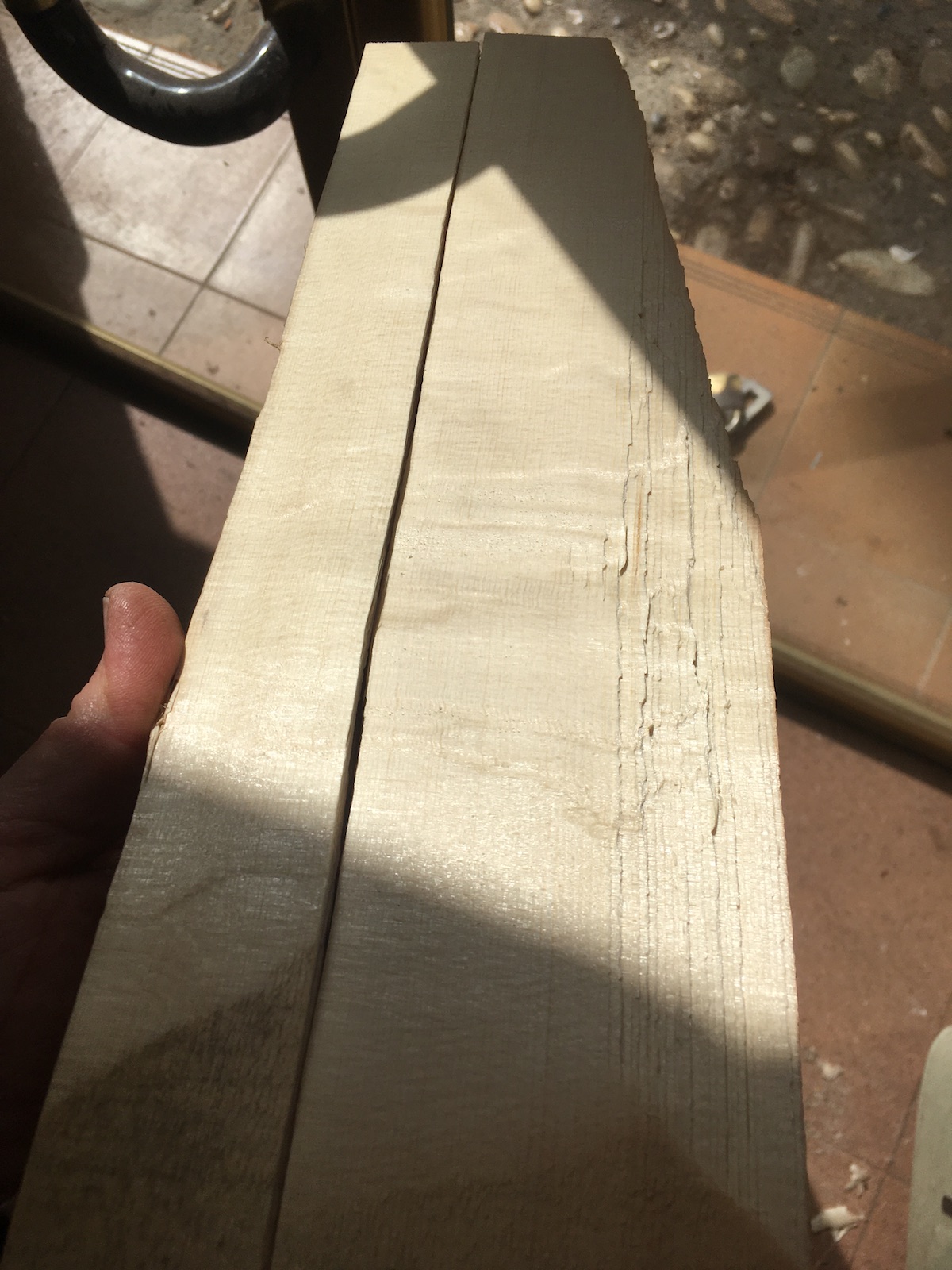We all know what bearclaw looks like whether we call it maschiato, hazelfichte or rizado. However, I had never examined the flat-sawn surface of a really good bearclaw board. My last post showed some of the spruce that I used to make braces and here is another one. You can see the typical surface of the bear claw along the quarter but in the next picture you see what the flat-sawn surface looks like. Pretty cool, eh?
 Some think that bearclaw is very desirable for guitar tops while others feel that anything which interrupts the straight, parallel grain cannot possibly be good for sound transmission. I have seen very flexible bearclaw and very stiff, both along the grain and transversely. I have made some excellent guitars with bearclaw so while I don’t think it is any better I do think that a well-chosen piece can make a great instrument. The main attraction of bearclaw of course is its beauty.
Some think that bearclaw is very desirable for guitar tops while others feel that anything which interrupts the straight, parallel grain cannot possibly be good for sound transmission. I have seen very flexible bearclaw and very stiff, both along the grain and transversely. I have made some excellent guitars with bearclaw so while I don’t think it is any better I do think that a well-chosen piece can make a great instrument. The main attraction of bearclaw of course is its beauty.
I don’t think many makers are using bearclaw for bracing and I normally wouldn’t either but I did put aside one set this time. I am going to dig through my bearclaw tops and find a particularily intense one and brace it with this set of braces, just for fun. I don’t think I will see any great difference especially since I selected the braces the same way I always do: split them and test them for longitudinal strength.

